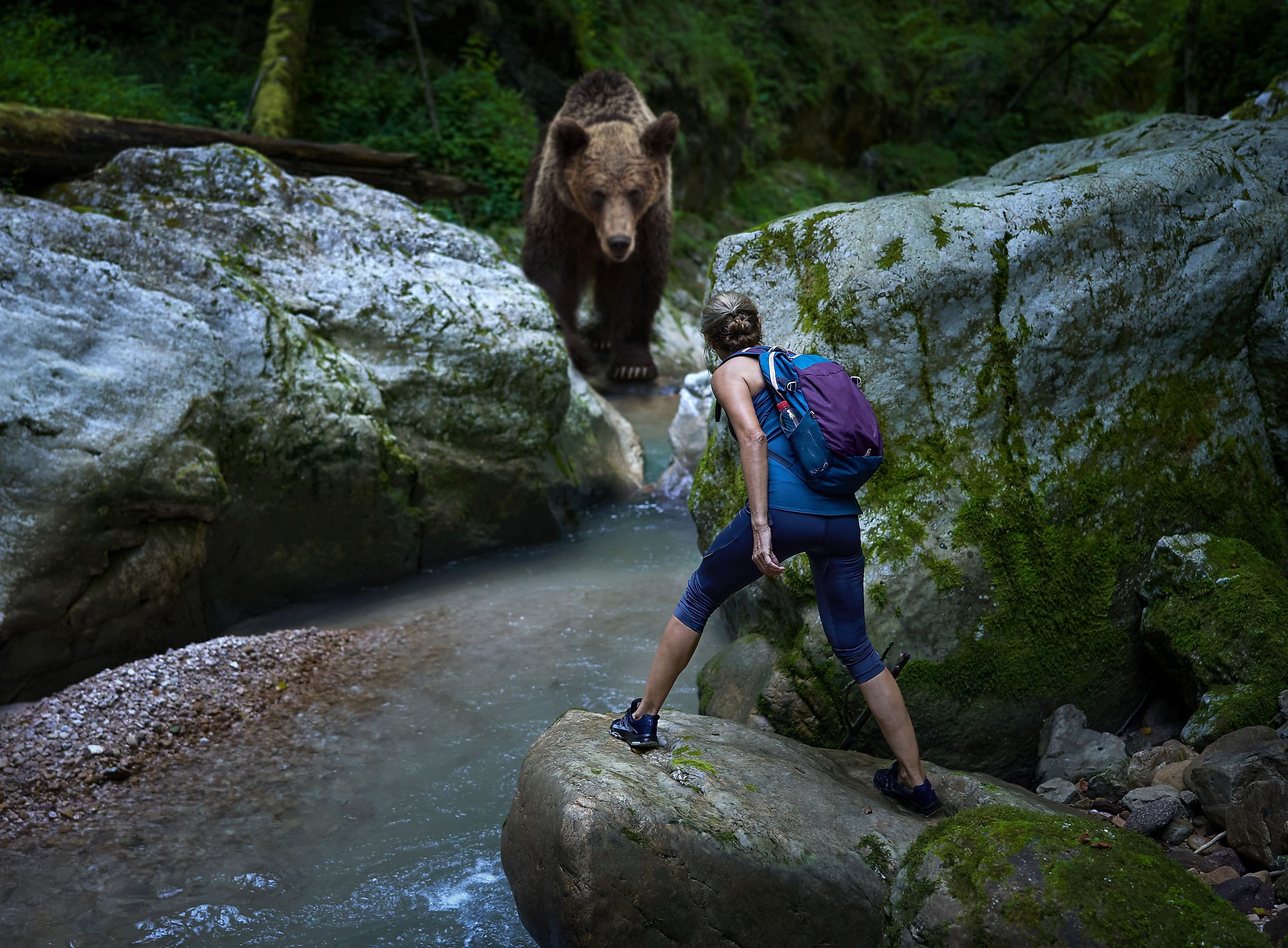
The 13 Deadliest Animals in Washington
The beautiful state of Washington in the United States is home to breathtaking beaches along the Pacific Ocean, dense forests, magnificent mountains such as the Cascades, and adorable coastal towns. But it is also home to several dangerous animals, some of which are downright deadly. Whether it's due to their predatory nature, determination to protect, or sheer accidents such as car accidents, these animals can cause severe injuries, allergic reactions, and fatalities.
Cougars
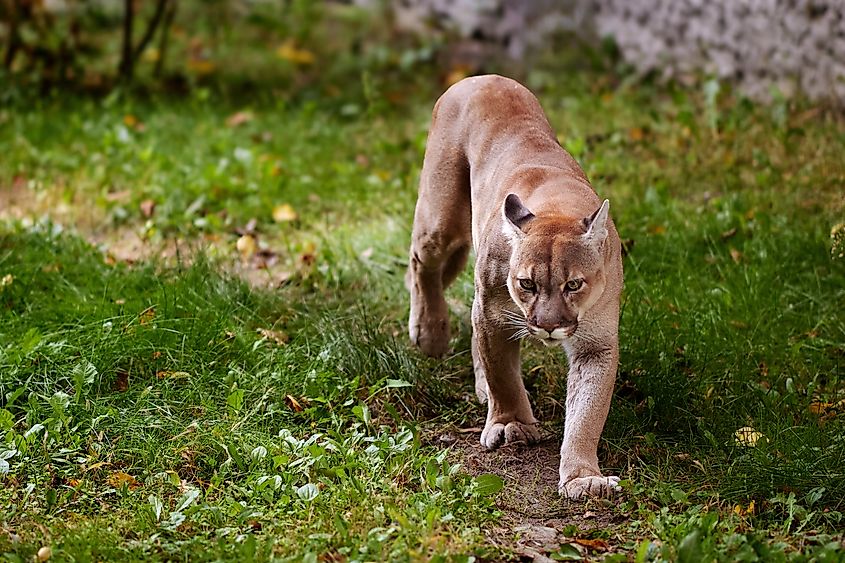
A beautiful cougar, also known as a mountain lion, walking through the forest.
Cougars, also known as mountain lions, are carnivores with a talent for stealth. Cougars are common in mountainous regions and dense forests; cougars are predators that take on animals such as rabbits, deer, and livestock. With tan, sandy coats and quiet footsteps, they blend in well in treetops, cliffsides, and sandy areas. One of the most terrifying facts about cougars is that they know you're there far before you know they are.
Cougar attacks on grown adults are rare and usually occur due to either them protecting their cubs or their territory or just the cougar's desire for conflict. With sharp claws and teeth, as well as strength and speed, they can be hard to fight off, which means the best way to deal with a cougar attack is to scare it off. Make loud noises, yell, talk loudly, and wave your arms to appear bigger. Throw rocks and other debris that might be nearby.
Cougars are a much more significant threat to pets and children, which they see as easy prey. Outside cats and kids playing on their own are at the biggest risk, and an attack can occur without warning. Always keep an eye on those smaller than you when in cougar territory.
Coyotes
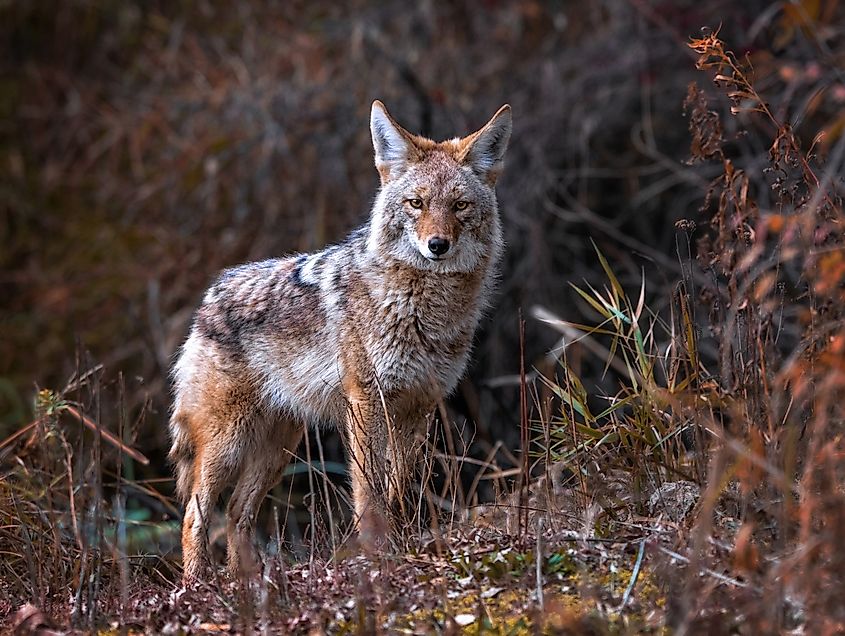
A wild coyote in its natural habitat.
Coyotes are smaller than wolves but make up for it with their sneaky tactics. A part of the canine family, these brazen predators hunt down rodents, small animals, and livestock. They are highly adaptable, which leads to their presence being known in various environments such as prairies, mountains, forests, and urban areas. Wherever they think there's food, they will try to journey.
Coyotes can form packs, which makes them more dangerous. They will utilize their numbers to ambush and take down their prey or cause a distraction so the others can strike. You can often hear them howling at night or yipping. Primarily nocturnal, they can still show themselves during the day, especially when desperate to eat.
Coyotes don't usually attack grown adults unless it is a quick nip or bite. They can be easily scared and don't want too much conflict during their hunt. However, they are a considerable risk when it comes to leaving pets outside, especially cats. They may also attack small children.
Grizzly Bears
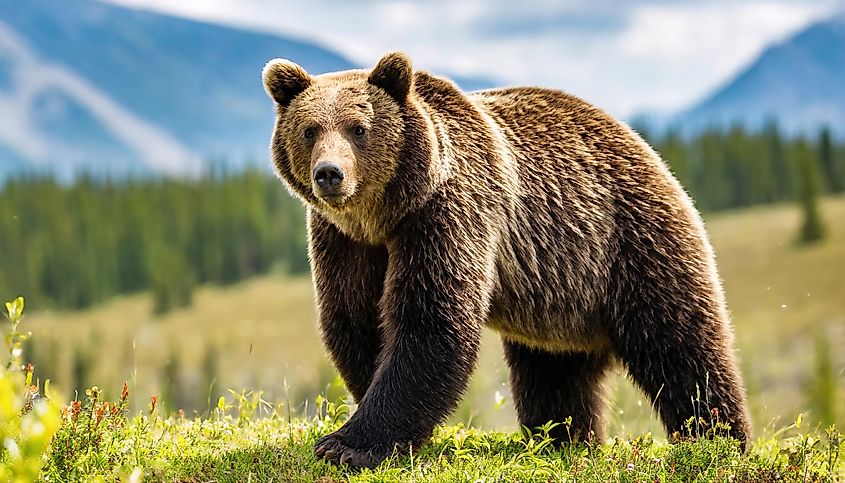
Grizzly bear walking in a grassy meadow.
Grizzlies are terrifyingly large bears known to be extremely territorial and aggressive when provoked. Usually weighing between 130 to 360kg, depending on sex, these massive predators can be identified by the hump between their shoulder blades. Grizzly bears are present in northeast Washington’s Selkirk Mountains, primarily in the Colville National Forest and the Salmo-Priest Wilderness.
These mammals are solitary and want to be left that way unless they are mating or caring for cubs. They will fiercely defend their territory and engage in fights with fellow grizzlies.
The safest time to venture out without a fear of grizzlies is during their hibernation period, which typically lasts from November to March.
If you do run into a grizzly bear, do not run. Do not try to fight back. Always carry bear spray when traveling in bear country, but if that doesn't work, your best option is to lay down and play dead on your stomach with your backpack or other gear over your back and head. Let the grizzly inspect you, and do not react, despite how hard that may be, to their nudges and possible attacks. Once the bear thinks you're no longer a threat, it will hopefully wander off.
Moose
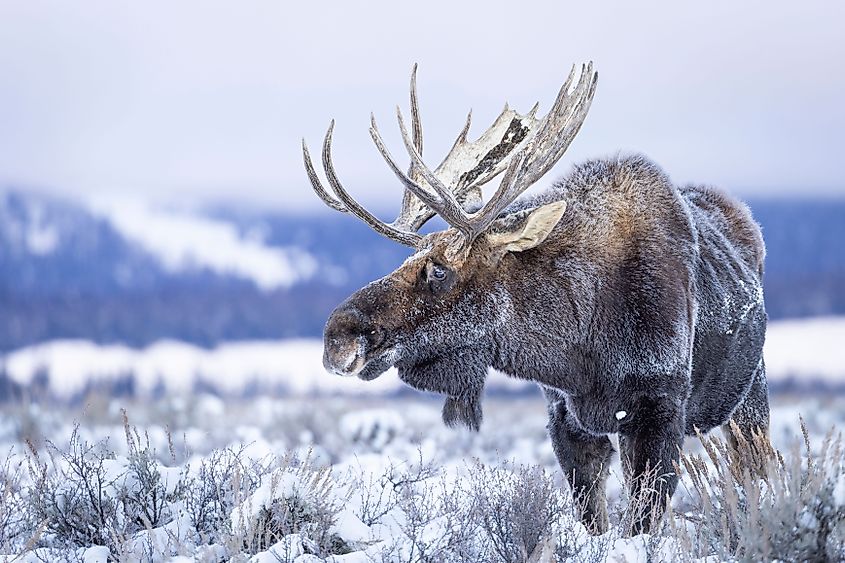
A majestic moose resting in a tranquil wintery landscape.
Moose are primarily found in the northeastern regions of Washington. They are herbivores, munching on leaves, aquatic plant life, bark, twigs, and other plant material. Known for their distinct antlers, long legs, and the dewlap that hangs under their chin, they are solitary mammals that usually mind their own business.
Moose can become dangerous during rutting season when they are desperate to mate or if they feel threatened. They will charge, using their antlers to strike, and when able, will try to stomp with their front hooves or kick with their back. These powerful blows can lead to severe injuries and death.
Another way moose are dangerous is when they accidentally make their way onto roads. A collision between a car and a moose ends horribly for both parties. Due to their size, they will often be struck in the legs, causing their bodies to hit the windshield and smash through. A panicked moose will thrash and kick, injuring itself further and causing more damage to those inside the vehicle.
Western Rattlesnake
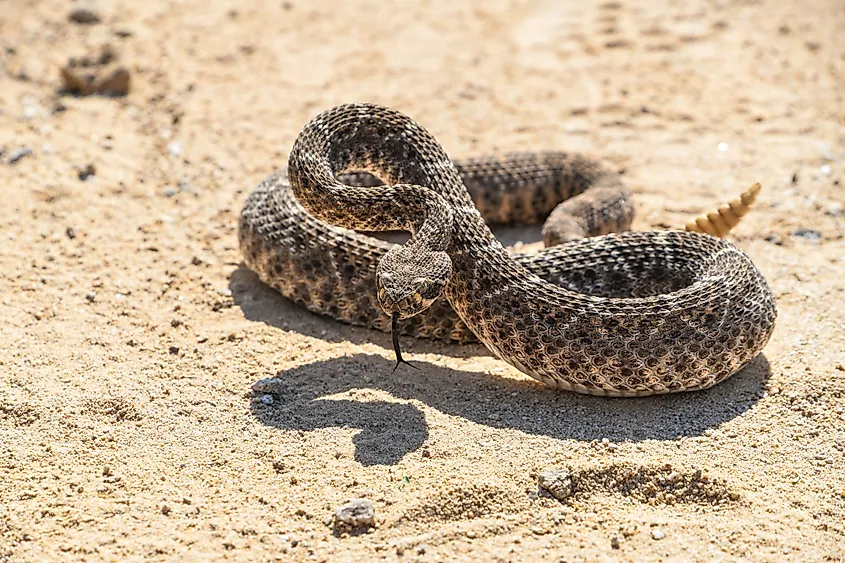
Western Diamondback Rattlesnake in the desert.
The western rattlesnake is a pit viper that produces a strong venom. They range from 1.5 to 3.5 feet in length and have triangular heads, thick bodies, and a rattle on the tip of their tails. These snakes prefer to live in rockier climates or dry areas such as grasslands and woodlands. Western rattlesnakes are common in eastern Washington, especially in the Columbia Basin.
In the summer, they are more nocturnal due to increased heat, but during colder months can be seen during different parts of the day. Preying on small mammals and reptiles, they usually don't attack humans unprovoked.
Western rattlesnakes will give warnings before they strike if you are far enough away by shaking their rattles and showing their teeth. Many bites occur due to humans startling the snake or stepping on it or its hiding spot. Their bites are hemotoxic, which means their venom destroys surrounding tissue and inhibits blood clotting. Causing severe pain, swelling, and damage to the area around the bite, these attacks require prompt medical assistance.
Great White Shark
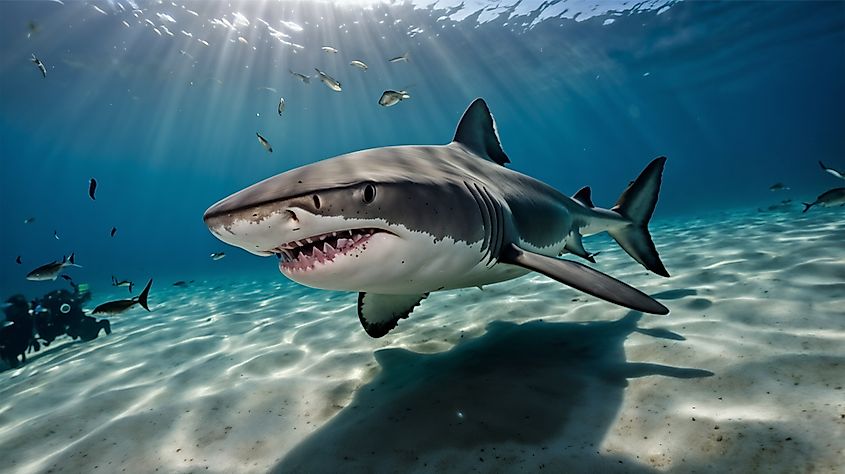
A great white shark, one of the largest predatory fish in the world, swimming in the ocean.
These giant sharks can measure between 11 to 16 feet, with some reaching up to 20 feet, and weigh between 680 to 1100 kg. They have cone-shaped snouts, large fins, and a powerful tail. Their backs are often grey in color, with their underbelly being white.
Great white sharks are rarely sighted in Washington waters. They are apex predators that feast on other marine life, including seals, fish, and dolphins.
Attacks on humans are rare but catastrophic. They have been known to attack surfers due to their resemblance to their usual prey. Often striking without warning, their powerful jaws and teeth easily rip into flesh, causing severe blood loss, limb loss, and death.
Avoid succumbing to a great white by traveling in groups, staying close to shore, and being aware that you are in their home. Do not enter the water if you are bleeding or if warnings are posted on beaches stating that you should avoid swimming due to shark activity. Avoid the water during dusk and dawn or when marine animals like seals and sea lions are present.
Western Black-Legged Tick
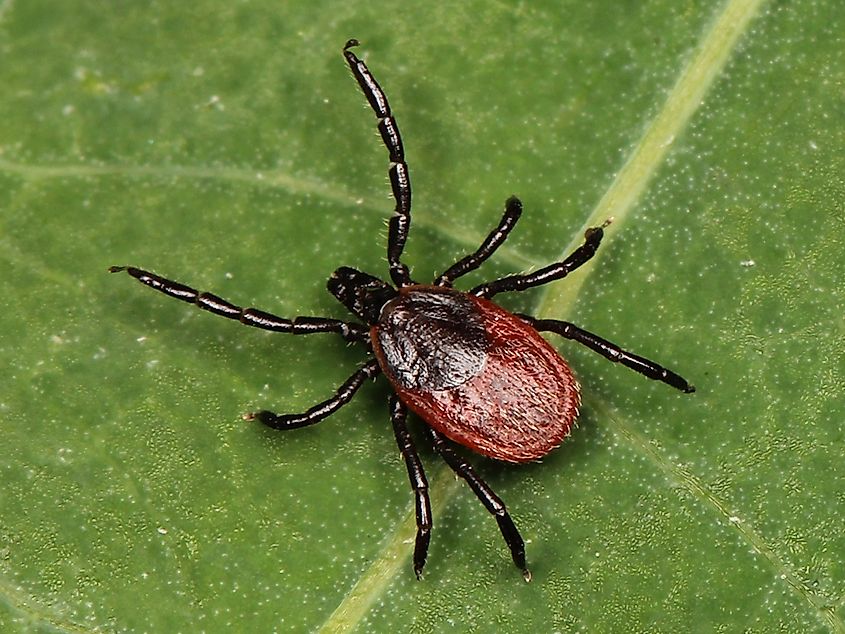
Close-up of a Western black-legged tick (Ixodes pacificus).
Also known as deer ticks, these tiny creatures are common in areas with dense plant life, including tall grass and forests. They have flat, oval-shaped bodies and black legs and can be hard to spot.
Feasting on blood, these ticks will attach to an unsuspecting host and feed for days on end. During this time, they can transfer diseases. While not inherently dangerous themselves, the diseases they carry can be detrimental.
If you happen to be bitten by one of these ticks, remove it as carefully as possible to avoid detaching the mouthpiece. Save the tick for identification. You will also want to monitor for or get yourself checked for diseases such as Lyme disease and anaplasmosis. Lyme disease can cause a circular rash, flu-like symptoms, and, in later stages, severe pain, cardiac issues, arthritis, and facial palsy. Anaplasmosis can cause fever, chills, fatigue, muscle and joint pain, confusion, respiratory distress, and bleeding issues.
Avoid tick bites by wearing long clothing in tick-infested areas, such as pants that go down to your ankles and shirts that go to your wrists. Wear footwear that covers all exposed skin, and use a tick repellent. Check yourself and others, including pets, when you arrive back home.
Black Bears
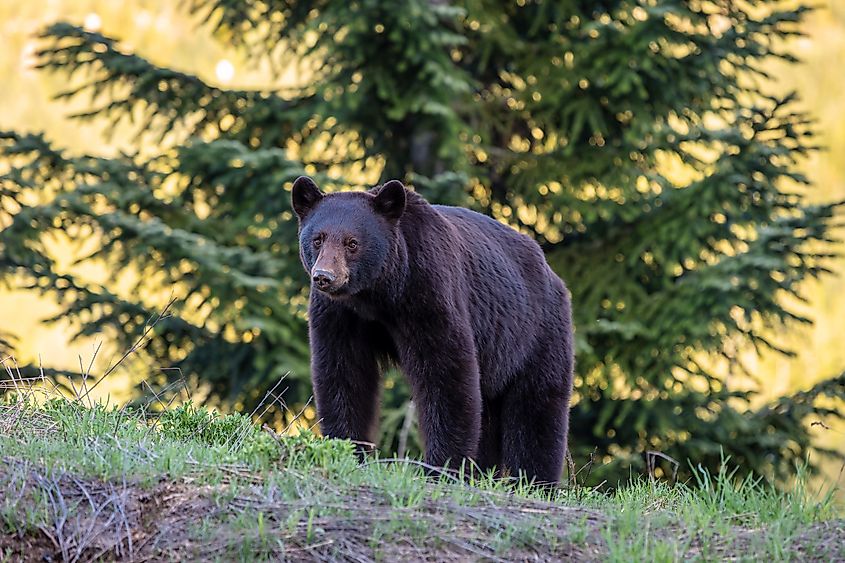
A young black bear in the forest.
Black bears, although not as large as grizzlies, can still be a threat. They often have thick bodies, shorter legs, rounded ears, and lighter-colored snouts. Mainly black, they can also come in various shades of brown.
Black bears are common in forested and mountainous areas and occasionally enter urban areas, going anywhere on their quest for food. Like raccoons, these animals love to eat trash and left out food. It is extremely important that you keep your garbage in bear-proof containers, and all food secured and out of reach when in black bear territory. With an excellent sense of smell, they can be attracted to anything from picnic foods to self-care items like body wash.
Black bears prefer to avoid human interactions and can be easily startled. The best way to deal with a black bear is to make loud noises and wave your arms. Utilize things like whistles, and in dire situations, bear spray. Black bears will usually only attack when they are protecting their cubs, or feel threatened. But their sharp claws and teeth can cause severe injuries.
Deer
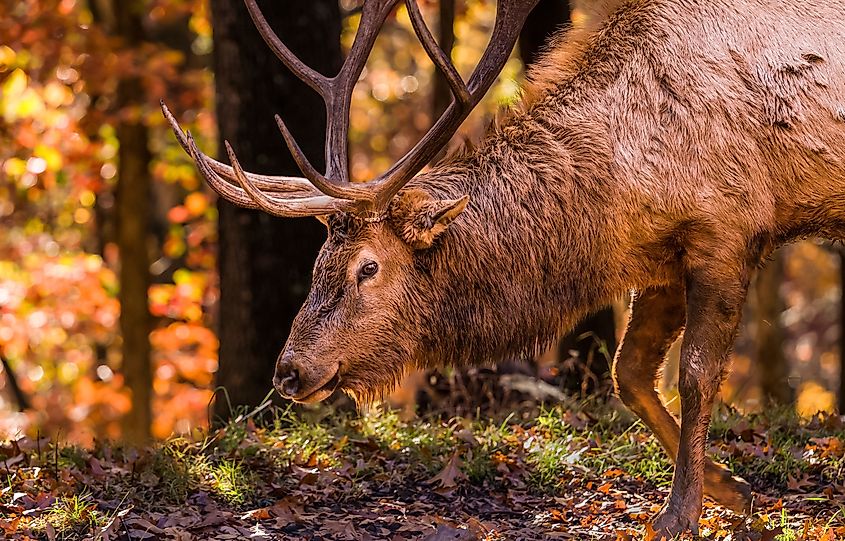
Deer are herbivores that don't attack humans, which would make one think they aren't dangerous, encountering a deer on foot will just be a pleasant memory. They are easily spooked and will run if threatened.
But deer-related car accidents are a driving force in deaths every year in the US. They are highly unpredictable, especially when they are near roads where they can jump out of the bushes without warning in an attempt to cross, and if drivers aren't expecting it, they can cause collisions. They also will tend to freeze when caught in headlights or panic when stranded in the middle of a road. Depending on the size of your vehicle, deer can come in through the windshield or cause damage to the sides of your car. This can deploy airbags or cause injury from the crumpled car material.
Avoid deer-related accidents by keeping an eye on the sides of the road. At night, their eyes can reflect back your headlights, which can give you a warning signal. When driving during dusk, dawn, and overnight, always be aware that a deer can jump out at any moment, and be prepared to stop on a dime.
Bald Faced Hornet
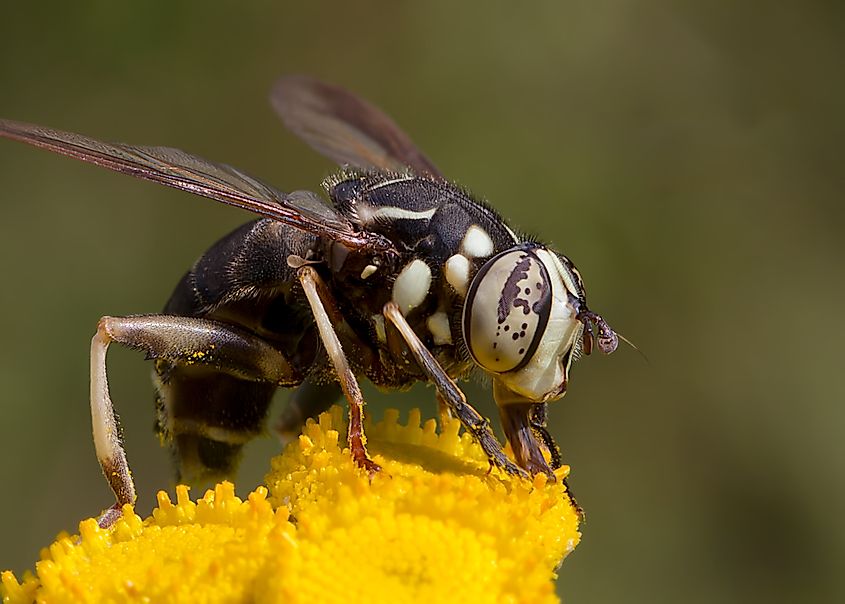
Bald-faced hornet (Dolichovespula maculata).
Bald-faced hornets are aggressive creatures known for their black bodies and distinctive white or pale yellow markings on their face, abdomen, and legs. Bald-faced hornets build nests in trees and shrubs and are highly territorial and protective of their queen.
They feed on other insects as well as sweet foods like fruit. They will chew on wood fibers to make their nests, which are built from the material created when the wood mixes with their saliva.
These hornets can attack unprovoked, but many stings come from the disturbance of their nest. These stings are painful and cause swelling and itching due to the release of venom. The main risk from a sting is an allergic reaction, which can lead to anaphylaxis. If you spot a nest, it's best to contact a pest control specialist since dealing with the issue yourself can lead to multiple stings and a swarm.
Black Widow
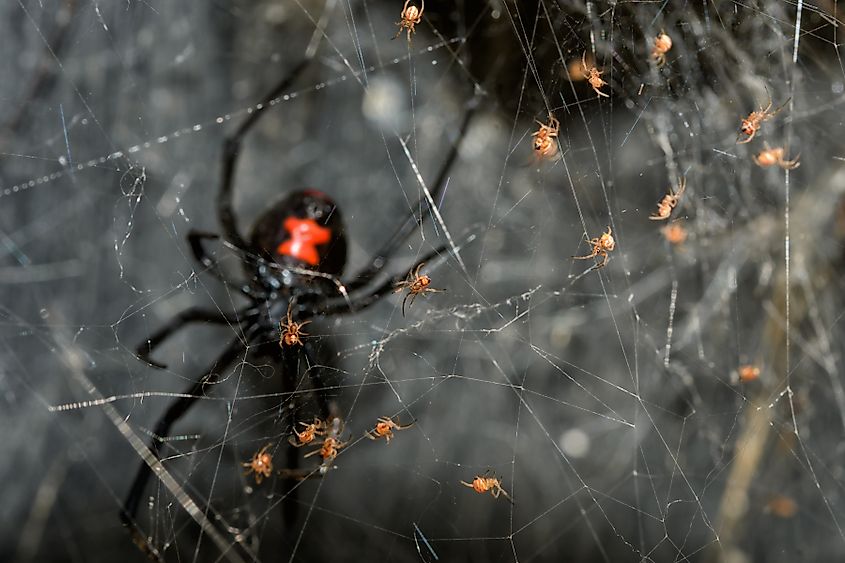
Southern Black Widow spider babies climbing on their web.
Black widows are a type of spider known for their iconic black bodies and red markings on their backs. Red is more common in females, who are also larger in size than their male counterparts. The males are often also more brown in color and have markings such as dots or stripes.
Black widows build irregular-shaped webs in hidden spots where the threat of being disturbed is unlikely. They can be found in spots like basements, cellars, attics, woodpiles, garages, and clutter.
Their venom contains neurotoxins, which they use to paralyze their prey. When this venom is injected into a human, it can cause pain, redness, swelling, and cramping. Severe symptoms include nausea, vomiting, sweating, chest pain, and difficulty breathing. Prompt medical treatment is essential.
Bees and Wasps
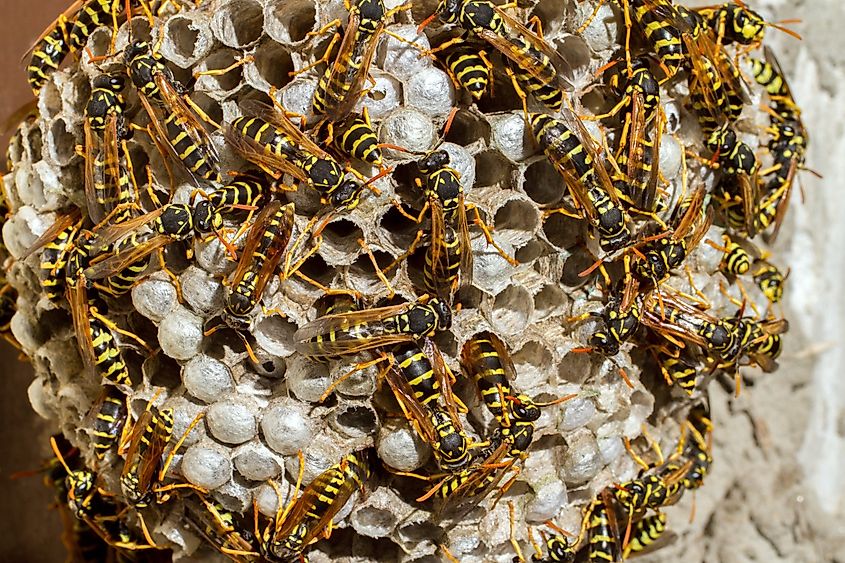
A large wasps' nest teeming with live wasps, captured in a close-up view.
Bees and wasps account for several deaths per year due to their victim being allergic.
Bees shouldn't be feared due to this statistic, and as an already struggling species, shouldn't be harmed in any way. Bees aren't aggressive in nature, and only sting if threatened, due to the fact they will die after stinging. This is due to their stinger becoming lodged in their target, resulting in the ripping of their abdomen when flying away. They sacrifice themselves to protect their hives and queen.
Wasps on the other hand are a different story. Wasps, like hornets, are aggressive in nature and do not die after attacking. More slender and not as fuzzy as bees, these creatures can attack without warning, and become extremely territorial when their nest is threatened. They can sting multiple times, injecting venom that causes pain, swelling, and itching.
If someone happens to be allergic to bees and wasps, their stings can lead to anaphylaxis, severe swelling, and extreme pain. Prompt medical treatment is necessary, and if a medical device such as an EpiPen is available, its use is crucial.
Wolves
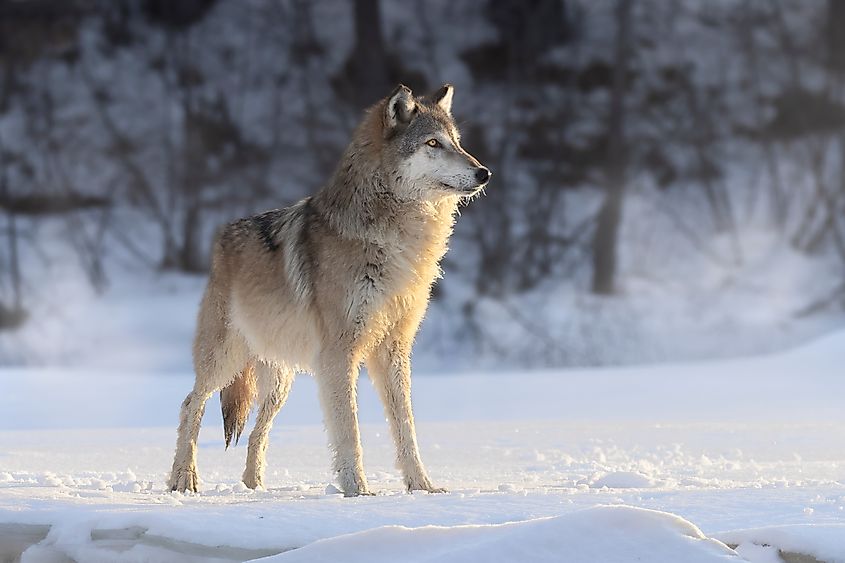
Wolves are carnivores and are a part of the canine family, like coyotes. Much larger than coyotes and most domestic dogs, these magnificent animals are elusive and are a
They have thick coats that keep them warm in cold climates. Their fur is also an excellent camouflage. Known for their bushy tails, broad snouts, and powerful legs, they prefer to live in areas with an abundant food source. Wolves in Washington are primarily found in the northeastern part of the state. Using scent markings as well as their iconic howls, they communicate and take on different roles.
Wolf attacks on humans are extremely rare, with some sources stating that a wolf attack-related death hasn't occurred in North America in the 20th century. Most conflicts with humans come from either the wolf feeling threatened or becoming too brazen due to its lack of fear of civilization. Another cause for attack is rabies, as well as the protection of their cubs. Wolves are more of a risk to pets, including dogs and cats. They see them as prey, especially when their natural food sources are scarce. With powerful jaws and impressive hunting tactics, they can kill a smaller animal within seconds.
Stay Safe and Informed in Washington's Wild
No matter where you are, it is important to be aware of animals that call the area home. When traveling to a new state or country, familiarize yourself with possible threats, and come prepared. If you plan to hike in Washington, carry bear spray and noise-making items such as whistles. Always obey signage that may warn you of a predatory animal close by, and travel with others if you can. Keep an eye on pets and children, and know what to do if you happen to encounter a dangerous, possibly deadly animal. Be aware of allergies, and know where these creatures may like to hide. But most importantly, don't let fear keep you from enjoying everything Washington has to offer. Just be aware, and make sure to have a good time.











